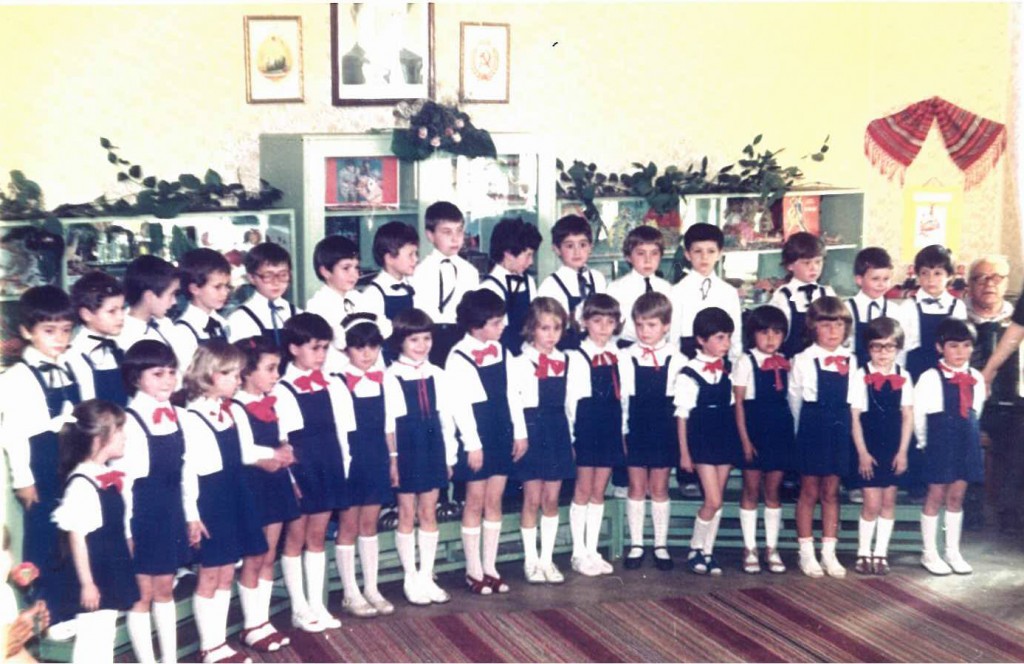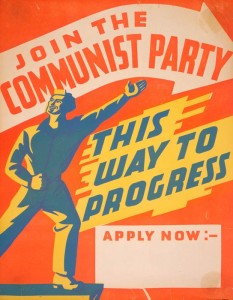Earlier this year, I read Keith Hitchens’ Concise History of Romania, curious to learn more about the country I once called home, and hoping to no longer be ignorant in conversations with Corina and our Romanian friends whenever important figures or events get mentioned.
I was especially interested in discovering how, in the mid-1940’s, Communists were able subject a freedom-loving European people to a totalitarian regime that lasted more than forty years.
(To give some perspective on how recent these events are, King Mihai, the last king of Romania, is still living today. I can recall multiple conversations with older Romanians whose memories extend to the pre-Communist era and who have now experienced more than two decades of freedom. Click here for the story of how a Reformed Church overthrew Communism in Romania in 1989.)

How did the Communist takeover of Romania happen? I don’t want to discount the importance of physical force, since the ever present Securitate was an integral part of keeping Romanian resistance to a minimum.
But it is interesting to see how the socialist ideologues accomplished their revolution by focusing on three spheres of influence. In each, the Communists sought to rewrite the story of Romania so that their ideals were seen as the culmination of all Romanians’ hopes and dreams for freedom and equality. Here’s what they did.
 1. Marginalize the Intellectual Dissidents.
1. Marginalize the Intellectual Dissidents.
In order to rewrite the people’s story, the Communists had to deal with intellectuals who had a different view of Romania’s past and present. Hitchens explains how, as the revolution progressed, intellectuals (especially in the humanities and social sciences) were “shunted aside and unable to pursue their careers.” It didn’t begin with prison time, but with cultural marginalization for “impeding progress.”
Leaders of universities and other institutions demanded uniformity of thought regarding the goodness of Romania’s present and the rewriting of Romania’s past. Intellectual dissidents weren’t immediately jailed for their beliefs; they were simply shut out of the conversation. The price you paid for dissenting from prevailing views was that you were no longer seen as relevant. You no longer had a voice in societal affairs.
The next step was more dramatic. Those who persisted in “standing in the way of progress,” Hitchens writes, “were treated more severely.” Intellectuals who dared criticize the new vision of human and societal flourishing were fined, threatened, and sometimes sent to prison on trumped-up charges of sedition. Only one type of intellectual could exist in the new era: the intellectual who affirmed the Communist regime’s idea of modernization.
 2. Rewrite the History Books.
2. Rewrite the History Books.
Next, the Communists focused on the study and interpretation of Romanian history. Hitchens explains:
The party limited the practice of history to the Soviet model. It thus required historians to demonstrate the correctness of the Marxist-Leninist (and for a time, Stalinist) interpretation of historical development and thereby focus on economic forces and the class struggle. The party elite conceived of history, in the first instance, as a reflection of the interests of the present, and, not surprisingly, it insisted that the Romanians’ past, from Dacian and Roman times to the post-Second World War era, be reconfigured.
Among the major changes introduced were new interpretations of the role of the Slavs in the ethnic and cultural development of the Romanians and revisions in descriptions of the relationship of the principalities and the Romanian kingdom to tsarist Russia and the Soviet Union. A downgrading of the Romanians’ association with the West was an inevitable consequence of the new worldview.
Rewrite the story, and you rewire the people.
Unfortunately, historical facts and logical arguments were the casualty of this revolution. Studying history was no longer a means to understanding the past but a tool for shaping the future:
The party elite… discouraged open, public debates about fundamental issues of historical development or even about what had actually happened at a given moment; there could be only one historical truth, even if it was constantly being altered to suit the party’s needs of the moment.
To reinforce the new history, the elites took control of the historical conversation, and discounted anyone who disagreed with the party’s view of progress:
The party was unwilling to leave the emergence of the “new history” to chance. Eager to mold the historical profession to suit its purposes, it kept historians, a category of intellectuals especially suspect, under close scrutiny… Historians were joined together in teams to carry out research on topics of particular relevance to the party’s program… Historians of the older generation and many younger colleagues who could not adjust to the new methods of research and found the new criteria of historical truth repugnant were marginalized.
As the years went by, the Romanian history books were frequently revised in order to show how the current regime was “in essence the natural culmination of earlier strivings of ‘progressive forces’ to promote a true people’s democracy and secure social justice.” And then, in a frightening line, Hitchens claims ”even the dead could be made to conform,” and explains how Romanian heroes like Eminescu and Caragiale were “reinterpreted in the light of prevailing truths.”
 3. Neutralize the Churches.
3. Neutralize the Churches.
The only other group standing in the way of the Communist party’s progress was the church. Not surprisingly, the Communists implemented policies to “eliminate all influence by organized religion from society and transform Romania into a purely secular state.”
Why were the elites so hostile to religion? Because, as Hitchens explains, it was “an ideological rival with deep roots among the population as a whole.” The church was a “formidable obstacle” to “progress.”
How did they handle believers who questioned the party’s vision of progress? They stifled the church’s ability to be involved in social action apart from government regulation. They closed church-operated elementary and secondary schools. They shut down charitable institutions.
Freedom of worship was still guaranteed, but this was reduced to the study of religion at home, in church buildings, or in seminaries. Religion was a private matter with no place in public.
Many evangelical and Orthodox Christians understood the signs and began to resist openly. But some Christians believed the prevailing spirit of progress could be merged with Christianity.
Justinian Marina, patriarch of Romania, left a mixed legacy in which he sought to protect his parishioners from persecution, while simultaneously publishing works urging the faithful “to adapt to the circumstances of the time” and to contribute to the new society being built. ”Justinian was convinced that such a course was fully in accordance with the traditions of the Orthodox Church,” Hitchens writes. The patriarch sought to reconcile Communism and Christianity for the benefit of both. The result, of course, was the triumph of Communism and the relegation of Christian truth to the margins of society, where believers flourished as a counterculture in the midst of societal and political pressures.
Conclusion
I am challenged by the testimony of Romanian believers during the Communist era. Though some colluded with the authorities and compromised their witness, many suffered harm for remaining true to their convictions.
Voice of the Martyrs’ founder, Richard Wurmbrand, watched as countless religious leaders capitulated to the Communist ideology and publicly praised the new developments. His wife, Sabina, disgusted with the compromise told him to “stand up and wash away this shame from the face of Christ.” He did, and he spent years in prison for his preaching.
What enabled Christians to remain true to Scripture and to the faith they had received from their forefathers? They knew what time it was. They lived in a different story, one that couldn’t be overcome by Communists tinkering with the history books and suppressing intellectual dissent. They belonged to a church, not a political party, and they trusted God to vindicate them in the future.
Today, the Communist history books and their feeble visions of “progress” are in the dustbin of history. The Church marches on… with a Book that we won’t revise.





















